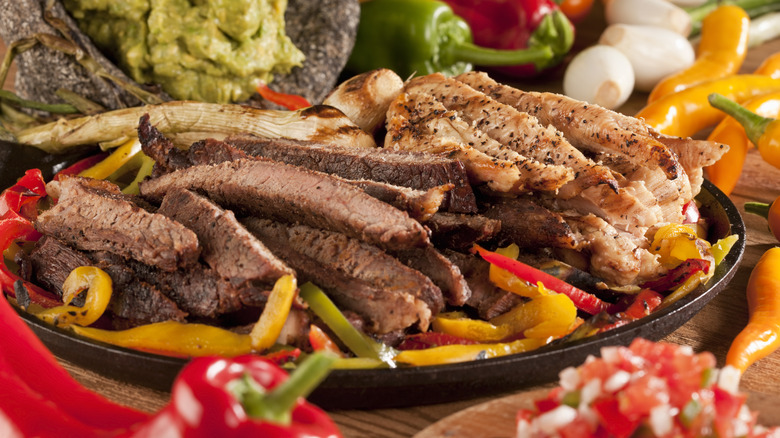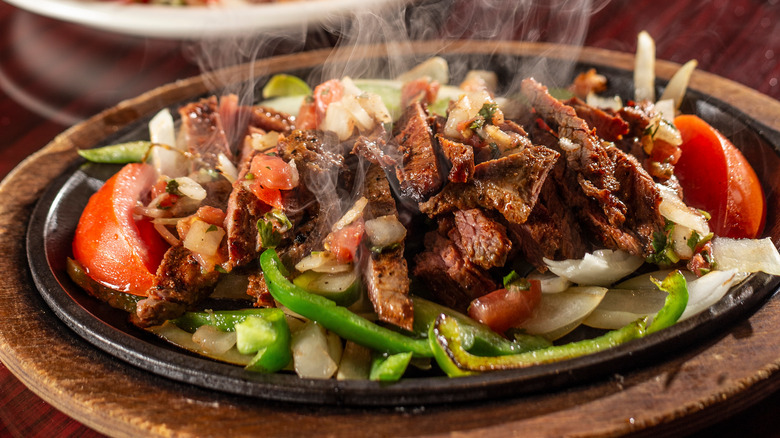The Tex-Mex Origins Of Fajitas
It isn't always easy to determine the foods that were invented in America. In fact, many dishes that most would guess have non-American roots were actually first concocted in the United States. The pork-packed Cuban sandwich was born in America, and General Tso's chicken — despite being named after a Chinese military leader from the 1800s – was created stateside, too.
The style of food that has been the most subjected to Americanization is Mexican. It's easy to understand why — after all, the U.S. and Mexico share a border. There is an entire offshoot of Mexican cuisine known as Tex-Mex and plenty of those "Mexican" foods you won't find in Mexico at all. One of these American interpretations of Mexican food is fajitas. In the 1930s, ranch workers began frying up chunks of beef over their campfires. Several decades later, María Ninfa Rodríguez Laurenzo (aka Mama Ninfa) started serving this vaquero invention in her struggling tortilleria, and the fajita has been a staple of Tex-Mex cuisine ever since.
Fajitas and vaqueros
The difference between Tex-Mex and Mexican food, broadly speaking, is a matter of ingredients. Cattle are a staple of the Texas countryside, but beef wasn't as readily available in 1930s Mexico, so pork is a more common ingredient in classic Mexican cuisine, and finding a flour tortilla in a traditional Mexican spread is difficult. In fact, it was the bounty of beef in 1930s Texas that brought about the fajita.
Vaqueros, a term used to describe Mexican cattle ranchers working in the desert of West Texas, were sometimes given meat as payment. Often, this was skirt steak, a thin slice from the cattle's belly that is both lean and tough. With this cheaper cut, cattle ranchers camping in the countryside would fill a tortilla with beef and fixings as the perfect portable meal. This dish was called tacos al carbon, referencing the fact that it was cooked over smoldering coals.
Mama Ninfa's fajitas
Around 40 years after the camping cowboys cooked the first fajita prototypes, Mama Ninfa adopted the dish at her floundering tortilleria in Houston. To help her struggling business, she set up a restaurant in the building, where she sold the aforementioned vaquero victuals, which had come to be called South Texas tacos. The result was an instant business boom.
Later at Ninfa's on Navigation — as the restaurant would come to be called — the build-your-own aspect of the dish was introduced. Faja is the Spanish word for belt, and the name fajita was derived from the preferred cut of meat used in the dish: skirt steak. Onions and peppers have been cooked alongside the fajita meat since the food's inception. However, the new fajita preparation that Ninfa's introduced — where the ingredients are served separately and sizzling — allowed restaurant patrons to dictate the specific ingredients included in their meal while simultaneously drawing in diners with an array of sounds and smells.


